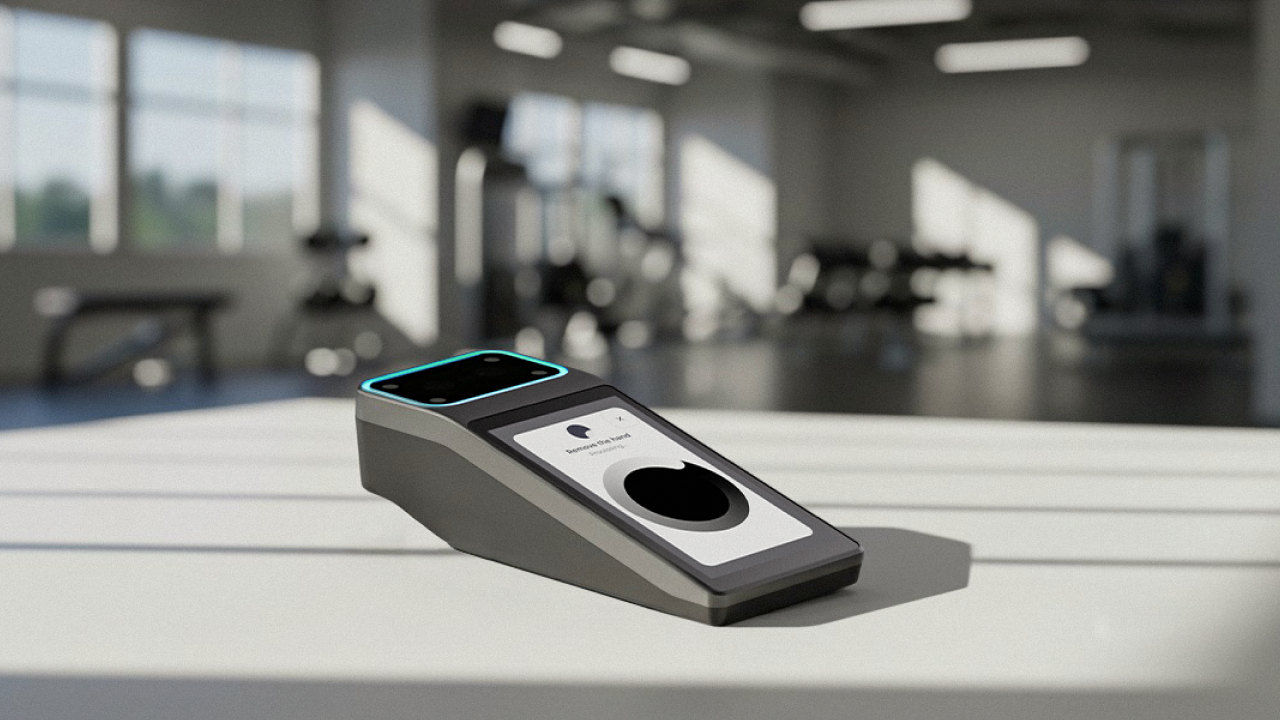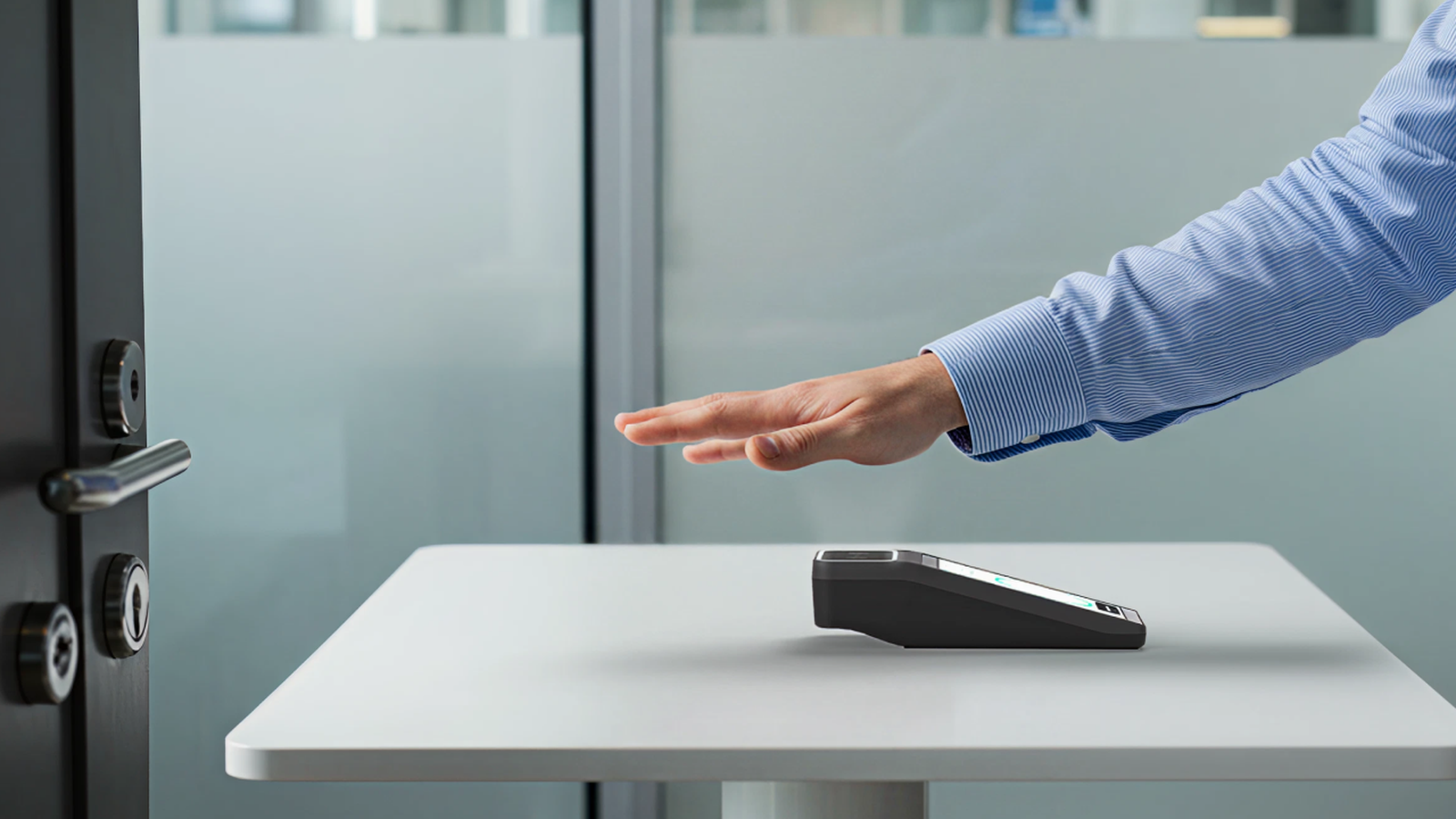Managing time and attendance shouldn’t be complicated. With biometric time cards, businesses are transforming how employees clock in and out, monitor hours, and ensure seamless operations. Among the most innovative solutions in this space is the adoption of palm ID technology, a private, secure, and scalable method revolutionizing industries such as office buildings, manufacturing centers, gyms, hotels, schools, and more.
If you’re exploring time management solutions that prioritize security without compromising user experience, biometric time cards equipped with palm ID may be exactly what your organization needs. This article will unpack how this technology works, the advantages it offers, and practical steps to get started.
What are biometric time cards?
Biometric time cards are transforming workforce management by using unique biological identifiers—like palm print and palm vein patterns—to verify employee identity and track hours worked. Unlike outdated PINs, badges, or swipe cards, these systems eliminate buddy punching, reduce fraud, and streamline clock-ins.
At Keyo, we’ve taken biometric time tracking a step further. Our palm-based platform enables employees to clock in and out with just a wave of their hand—no devices, cards, or passwords needed. It’s fast, secure, and privacy-first.
Why choose biometric time cards, especially palm-based ones?

Replacing outdated time-tracking methods with biometric time cards can unlock major operational benefits. But not all biometric systems are created equal. Palm-based time cards offer unmatched accuracy, ease of use, and privacy. Here’s why palm is leading the way:
1. Stop buddy punching for good
“Buddy punching”—when employees clock in for each other—costs businesses billions annually. Palm biometrics eliminates this entirely. Only the unique palm print + internal vein pattern of an individual’s palm can be used to clock in or out, making fraud virtually impossible.
2. Faster, smarter clock-ins
Forget the friction of badges, PINs, or fingerprint errors. With a quick wave of the hand, employees clock in instantly. Palm recognition is touchless, hygienic, and error-free—even in wet, dusty, or industrial environments.
3. Unmatched security
Keyo’s palm-based system never stores raw biometric images. Instead, it converts palm data into encrypted, anonymized templates—stored in secure hardware elements. This zero-knowledge architecture ensures the highest level of data protection.
4. Built to scale with your business
Whether you’re managing one retail store or a global warehouse network, Keyo’s palm biometric platform can scale effortlessly. Add devices, locations, and new users without overhauling your time-tracking system.
5. Fits every industry
Keyo’s biometric time cards work wherever identity and timing matter. Common use cases include:
Corporate offices – Automate employee check-ins and integrate with HR platforms
Manufacturing – Track shift changes accurately without downtime or device contact
Gyms & fitness centers – Enable fast, secure check-ins with no cards required for employees or members.
Hospitality – Log staff hours and access while delivering a seamless guest experience
Schools & universities – Monitor student attendance and staff entry with confidence
How palm-based biometric time clocks work (and how to deploy them fast)
Step 1 — Enroll once: Employees enroll in under a minute at a device or secure mobile station. The palm’s surface features and internal vein pattern are converted into encrypted, cancelable templates—no raw images stored.
Step 2 — Touchless clock-ins: A quick wave triggers on-device liveness + matching in <1s, even in wet, dusty, or gloved environments.
Step 3 — Sync to timesheets: Each event logs location, time, and job codes, then syncs to your time & attendance system.
Palm vs. fingerprint, face, badges, and PINs: which time clock fits best?
Choosing a biometric time clock often comes down to accuracy, hygiene, privacy, and total cost of ownership. Here’s a quick buyer’s guide comparing a palm time clock with a fingerprint time clock, facial recognition time clock, RFID/badge time clock, and PIN-based time clock.
Method | How it works | Strengths | Common issues for time & attendance |
Palm biometrics (print + vein) | Reads unique palm surface + internal vein map; touchless | Highly accurate, hygienic, resistant to spoofing; fast wave-to-clock; works in dusty/wet/industrial settings | Requires initial enrollment; needs line-of-sight to device |
Fingerprint | Captures skin ridges on finger | Familiar, low hardware cost | Touch-based (hygiene), higher failure with moisture/dirt/gloves; spoof risk; sensor wear over time |
Face | Matches facial features via camera | Hands-free, quick in ideal lighting | Privacy sensitivities; variable accuracy with masks/lighting; higher spoofing concerns without advanced liveness |
RFID/Badges | Proximity/NFC cards or fobs | Simple rollout; users already trained | Lost/stolen/shared cards enable “buddy punching”; recurring replacement costs |
PIN Codes | User enters numeric code | Zero hardware to carry | Easily shared; slow at shift changes; frequent resets and support burden |
Why palm technology wins for workforce management
Touchless & hygienic: Ideal for manufacturing, healthcare, gyms, and food service.
Fraud-resistant: Internal vein pattern + anti-spoofing makes “buddy punching” impractical.
Low friction at scale: Sub-second clock-ins reduce shift-change lines and payroll disputes.
Privacy-forward: With Keyo, cancelable templates are encrypted; no raw images stored.
How employers can get started with Keyo's palm technology for workforce management
Ready to modernize time and attendance with a palm-based biometric time clock? Employees enroll once and clock in with a wave—no badges or PINs—while events sync to your timesheets in real time. Whether you start at one location or roll out across multiple sites, our team supports planning, training, and analytics so you can curb buddy punching, streamline payroll, and scale confidently.
Contact us to learn more or visit keyo.com

 Fingerprint vs palm scanning: Here's the key differences
Fingerprint vs palm scanning: Here's the key differences How to scan your palm for payments, identification, and more with biometric technology
How to scan your palm for payments, identification, and more with biometric technology Palm-Powered Patient ID: The Future of Hospital Identification | Keyo
Palm-Powered Patient ID: The Future of Hospital Identification | Keyo